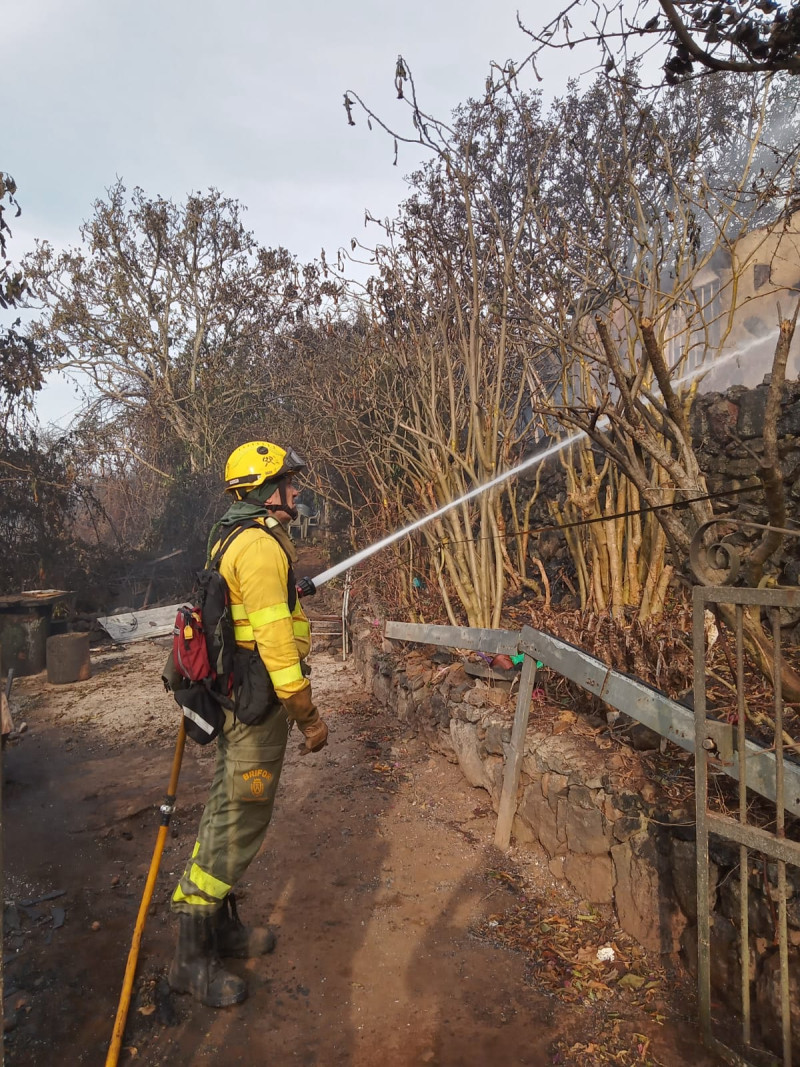On September 11, the fire was “under control”, but it was never extinguished – About 3,200 people were evacuated from their homes as a precaution yesterday Wednesday
The fire that destroyed part of the Spanish island of Tenerife, in the Canary Islands, in August has flared up in recent days and local authorities raised the danger level from 3 to 2 overnight Wednesday.
Almost 150,000 hectares in north-east Tenerife had been reduced to ash over the summer, around 7% of the area of the popular tourist destination.
🔥 Update #IFArafoCandelaria #IFTenerife (8:30 p.m.)
The Cabildo has deployed today Wednesday, October 4, an extinguishing operation that involves 90 people to work on the reactivations that have been produced by the fire.
HI ⬇️ pic.twitter.com/sd0wbx7mpu
— Cabildo de Tenerife (@CabildoTenerife) October 4, 2023
The fire had broken out on August 15 and on the 24th of the same month the authorities had announced that it was “stabilized”. On September 11, the fire was “under control”, but it was never extinguished.
“It is the same fire. We remember that it was declared under control, but it was never extinguished. It’s gone out of its perimeter, but it’s the same fire,” explained Ivan Martin, director of Tenerife’s rescue services, speaking to the Canary Islands’ state television network this morning.
“The night was quite intense, especially after 23:30, when we went to level 2, which allows the activation of the Emergency Military Unit”, a unit of the Spanish armed forces created to intervene immediately in case of disaster or danger.
The rise in temperature, which currently exceeds 30 degrees Celsius, as well as the strengthening of the winds have rekindled the outbreaks of the forest fire.
Local authorities announced on Platform X that reinforcements of 60 soldiers and 26 army vehicles had arrived on the island to participate “in the work of extinguishing the fire”. A total of 120 people are fighting the flames.
3,200 people were removed from their homes
About 3,200 people were evacuated as a precaution on Wednesday, according to updated figures, and have not yet returned. They are residents of the cities of Santa Ursula and La Orotava, Martin explained.
The Spanish island has faced much more devastating fires, such as those in 2007. But the meteorological conditions and topography of this fire had prompted authorities to speak of it as the “most complex” fire Tenerife has faced since 40 years.
The continuous increase in temperature, due to climate change, causes more frequent heat waves that are longer and more intense, while also increasing the chances of fires, experts warn.
In 2022, 3,000,000 hectares burned in Spain in more than 500 fires, a record for Europe, according to the European Forest Fire Information System (Effis).
Source :Skai
With a wealth of experience honed over 4+ years in journalism, I bring a seasoned voice to the world of news. Currently, I work as a freelance writer and editor, always seeking new opportunities to tell compelling stories in the field of world news.











